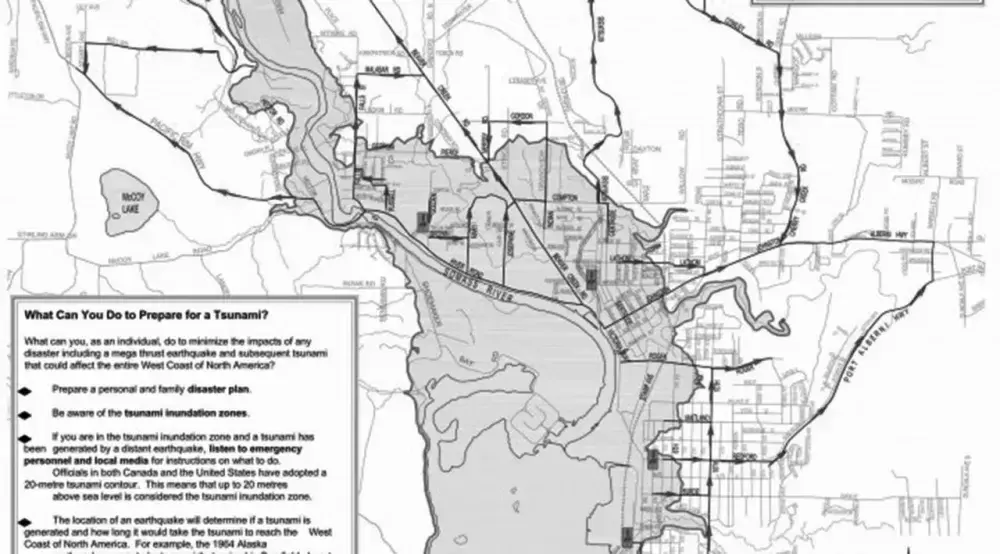A tsunami is a series of ocean waves caused by a major (above Magnitude 7.5) earthquake, usually at sea.
Shock waves from the quake radiate in all directions along the seabed, and they can travel thousands of kilometres at the speed of a jet airliner.
When those shock waves hit shallow water, a massive wall of water begins to pile up.
For those on shore, the first hint of an impending tsunami is often a sudden lowering of the ocean level as water is drawn up into the approaching wave. The largest tsunami on record reached a height of 33 metres.
On March 27, 1964, a 9.0 earthquake struck Anchorage, Alaska, causing massive damage on shore.
Four hours later, the resulting tsunami hit the West Coast of Vancouver Island, sending three major pulses of water up Alberni Inlet, causing extensive flood damage all the way to Port Alberni.
The second wave reached a height of 3.05 metres, and a high-water mark of 19 metres has since been used to designate safe areas in the city.
For Vancouver Island, the major threat is a rupture along the Cascadia Subduction Zone. This long fault line extends from Vancouver Island to Northern California and separates two tectonic plates: the Juan de Fuca and North American Plates.
The last major quake along the Cascadia Subduction Zone struck on the evening of Jan. 26, 1700, and the resulting tsunami struck almost immediately, wiping out entire villages, according to oral histories.
Since the 1964 tsunami, the City of Port Alberni has developed a local Tsunami Warning System, with public address speakers located in strategic areas.
The system is operated by the Port Alberni Fire Department and is triggered by a signal from the West Coast/Alaska Tsunami Warning Centre.
The purpose of the system is to warn citizens in low-lying areas to move to higher ground when an earthquake has been detected.
But officials warn that in the event of a “felt” earthquake, especially the dreaded Big One on the Cascadia Subduction Zone, don’t wait for the siren: when the ground stops shaking, pick up your grab-and-go bag and head for higher ground.







